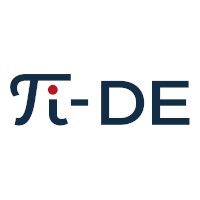D2.2 – Optoelectronic devices with polarized emission and absorption
Principle Investigator: Prof. Klaus Meerholz
During the first cohort, we have studied the use of templated merocyanine thin films in organic field-effect transistors. Templating of organic molecules on GNRs has been shown to result in solids with fascinating electronic properties.
For the second cohort, we envision chirality as one of the most fascinating properties of organic molecules. Currently, it is largely limited to the investigation of simple chiral molecules like amino acids or the likes of tartaric acid in the field of surface science. Optoelectronic materials remain almost unexplored in the field of ordered layer growth. We aim to study growth of chiral solids by using chiral and pro-chiral compounds on GNRs and other surfaces. In order not to limit opportunities we will also explore the growth of chiral GNRs. The project is closely interacting with project B1.2.
The project will provide training in the design, modelling, fabrication and characterization of organic optoelectronic devices such as solar cells. There will be opportunities to work with a wide range of tools, including vacuum deposition equipment, modern lithography, spectroscopy, Müller-Matrix ellipsometry, optical modelling software and many others.
This project will be a joint collaboration with Dr. Dirk Hertel.
References
[1] Budzinauskas, K., Fazzi, D., Hertel, D., Rüth, S., Schelter, J., Weitkamp, P., Diesing, S., Meerholz, K., van Loosdrecht, P.H.M. Impact of the Interfacial Molecular Structure Organization on the Charge Transfer State Formation and Exciton Delocalization in Merocyanine:PC61BM Blends. J. Phys. Chem. C 124, 21978, doi.org/10.1021/acs.jpcc.0c06296 (2020).
[2] Zablocki, J., Schulz, M., Schnakenburg, G., Beverina, L., Warzanowsk, P., Revelli, A., Grüninger, M., Balzer, F., Meerholz, K., Lützen, A., Schiek, M. Structure and Dielectric Properties of Anisotropic n-Alkyl Anilino Squaraine Thin Films. J. Phys. Chem. C 124, 22721, doi.org/10.1021/acs.jpcc.0c07498 (2020).
[3] Liess, A., Arjona-Esteban, A., Kudzus, A., Albert, J., Krause, A. M., Lv, A. F., Stolte, M., Meerholz, K. & Wurthner, F. Ultranarrow Bandwidth Organic Photodiodes by Exchange Narrowing in Merocyanine H- and J-Aggregate Excitonic Systems. Adv Funct Mater 29, doi.org/10.1002/adfm.201805058 (2019).
The ideal candidate has a training in chemistry, physics, electrical engineering or a related discipline and is already acquainted with OLEDs and or thin film optics. Curiosity, creativity, dedication and a strong team spirit are however equally important. As the group operates exclusively in English, applications from international candidates are explicitly welcomed; very good command of English language is highly desirable.
